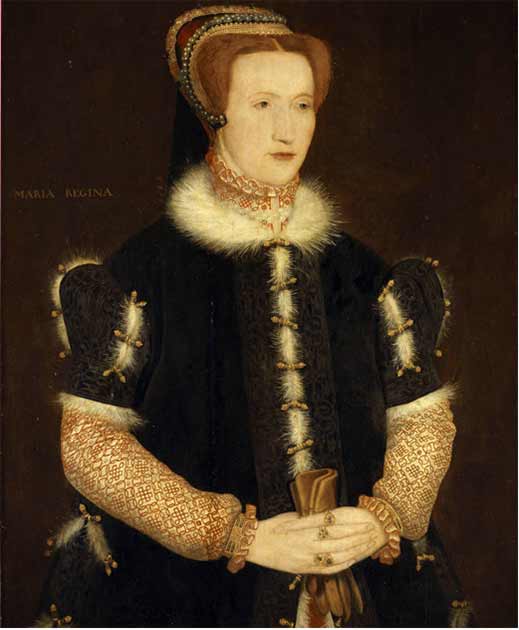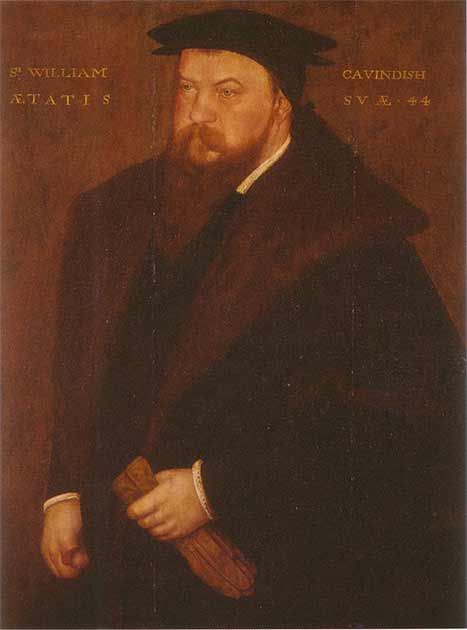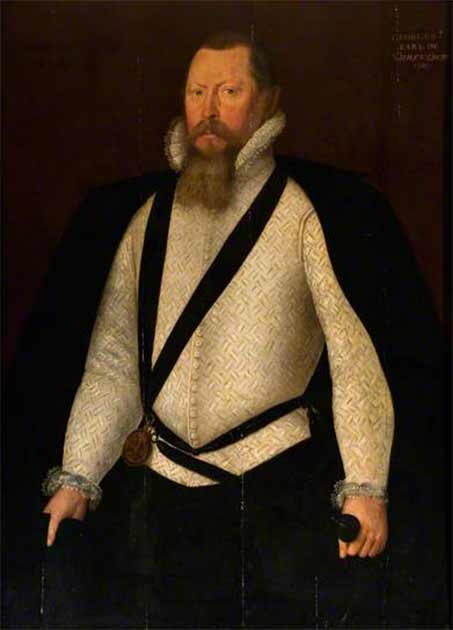
Bess of Hardwick: The Second Wealthiest Woman In Tudor England
Bess of Hardwick was one of the most prominent women who lived during the Elizabethan period. Although Bess was born into a respectable family, they were not well-to-do. Nevertheless, through a series of marriages, Bess rose through the ranks of English society, and became the richest woman in England after the queen, Elizabeth I. Bess of Hardwick is perhaps best remembered as the builder of Hardwick New Hall, a luxurious country house that symbolized the wealth and power that she had accumulated over the years. This country house is said to have rivalled the queen’s palace in its scale and magnificence.
Bess of Hardwick: The Early Years
Elizabeth of Hardwick, more commonly known as Bess of Hardwick, was born around 1527, and was the fourth daughter of John Hardwick and his wife, Elizabeth Leake. Bess’ parents owned land in and around Hardwick, Derbyshire, as well as a manor house on the site of Hardwick Old Hall. Although Bess was from a respectable land-owning family, they were not wealthy. Bess’ father died when she was young, and she was left with a small dowry.
- Bolsover Castle: 11th Century Fort Bloomed Into Stunning Residence
- Eyam’s Ultimate Sacrifice: Medieval Village Locked Down to Stop the Plague
When Bess was just around 12 years old, she left home, and went to serve at the nearby Codnor Castle. This castle was owned by the Zouches, a renowned Derbyshire family. During her time at Codnor Castle, Bess met Robert Barlow, a wealthy young man, and the two were married in 1541. Bess was only about 14 years old, and Robert was a year or two younger than his bride. Robert died a year after the marriage, leaving Bess a widow. A third of his income was also left to her as her widow’s pension.

Bess of Hardwick (later Elizabeth, Countess of Shrewsbury) as Mistress St Lo in the 1550s by an unknown artist. The later inscription incorrectly identifies her as Mary I. (Public domain)
Following the death of her first husband, Bess went to serve in the household of Henry Grey and his wife, Frances Grey. It is believed that Bess served as one of Frances’ ladies-in-waiting. Henry and Frances were the parents of Lady Jane Grey, the tragic “Nine Days’ Queen.” Bess’ arrival into the Grey household marked her entry into upper levels of Tudor society, as Henry was particularly influential at court during that time. Whilst Bess was serving in the Grey household, she met Sir William Cavendish, who soon became her second husband.
When he met Bess, William was twice widowed, and 20 years her senior. Nevertheless, the couple enjoyed a happy marriage, and produced eight children, six of whom survived into adulthood. In addition, this marriage produced the dukes of Derbyshire and Newcastle. Her fourth child, William Cavendish, was created Earl of Devonshire. The peerage was subsequently elevated to that of a dukedom towards the end of the 17th century. This peerage continues to be held by the Cavendish family. One of Bess’ grandsons, William Cavendish (the son of her fifth child, Charles Cavendish), was made Duke of Newcastle. The Cavendish family lost this title, however, after William’s son died without leaving a male heir.

Sir William Cavendish (1505-1557), English courtier, second husband of Bess of Hardwick and ancestor of the Dukes of Devonshire. (Public domain)
Marriage to Sir William Cavendish Brings Bess More Money
William had amassed a fortune thanks to his role as one of the Henry VIII’s commissioners for the dissolution of the monasteries. In 1549, on his new bride’s advice, he purchased the Chatsworth estate in Derbyshire for £600. Three years later, the first house was built on the site. This was an ambitious project, and the house was filled with many expensive furnishings. This was the first building project undertaken by Bess and would certainly not be her last. The construction of Chatsworth House sparked Bess’ interest in building projects, which she would continue throughout her life.
In 1557, William died, and Bess was widowed once more. It seems that unlike her first husband, Bess’ second left her with a great amount of debt. Consequently, two years later, Bess married again, this time to the elderly but rich William St Loe, who served as the Captain of Queen’s Guard, and Grand Butler of England. As William was a member of the queen’s household, this marriage offered Bess an entry into the queen’s inner circle. Indeed, Bess was made a gentlewoman of the privy chamber, a prestigious post, and one that was probably secured thanks to her husband’s influence. Being so close to the queen, however, was not without its risks, and Bess was a victim of collateral damage during one of the scandals that occurred in the queen’s household.
- Revealing the Recluse: The Sad and Secret Lives of Hermits
- Why is the Evidence for the Outlaw Robin Hood as Elusive as the Man Himself?
In 1560, a member of the queen’s household, Lady Katherine Grey, secretly married the Earl of Hertford, Edward Seymour. Lady Katherine was the sister of Lady Jane Grey, and therefore was a claimant to the English throne, due to her royal blood. Unlike her sister, who was a Protestant, Katherine was a Catholic, which was another reason for the queen to dislike her. It was, however, Lady Katherine’s clandestine marriage to Edward that infuriated Elizabeth, and caused the queen to take action. The queen learned about the secret marriage from Robert Dudley, her favorite, and the brother-in-law of her late sister, Lady Jane. When Lady Katherine found out that she was pregnant, she told Robert about it, hoping that he would intervene on her behalf.
Lady Katherine also shared her predicament with Bess, who, instead of sympathizing with her, was furious that she was dragged into this problem by Katherine. Bess’ anger was not unfounded. She was arrested as well on suspicion of conspiring with Lady Katherine to overthrow the queen. In 1561, both Bess and Lady Katherine were sent to the Tower of London, and interrogated. A few months later, Bess was released, dismissed from the queen’s privy chamber, and sent back to Derbyshire in disgrace. Lady Katherine was less fortunate, as she was kept in captivity until her death in 1568.

Portrait of George Talbot, 6th Earl of Shrewsbury, by an unknown artist of the English school. Dated 1580. When Bess of Hardwick married Talbot, she became Elizabeth Shrewsbury. (Public domain)
Marriage to the 6th Earl of Shrewsbury and Much More Wealth
Bess’ marriage to her third husband lasted until 1565, when the latter died. Bess was able to secure much of her late husband’s estates for herself. This made her wealthy enough to live independently. Nevertheless, Bess decided to marry for the fourth and last time. In 1567, Bess was married to George Talbot, the 6th Earl of Shrewsbury. As a result of this marriage, Bess was raised to the rank of countess, thereby becoming part of the English nobility.
Shortly after this marriage, Bess and her husband were given a difficult task by the queen: they were to be the custodians of Mary, Queen of Scots. In 1567, Mary was forced to abdicate by her own nobles. After a failed attempt to regain her throne in the following year, Mary fled to England, hoping to obtain Elizabeth’s protection. Although the English queen allowed Mary to stay, she was immensely wary of her. After all, Mary once claimed the English throne for herself, and her presence in England could turn her into a rallying point for English Catholics who hoped to see the throne occupied once again by a Catholic monarch. Therefore, the Scottish queen was kept in custody. Although Mary was treated as a royal, she was nonetheless a prisoner of Elizabeth I. Mary would remain in the custody of Bess and her husband for the next 15 years of her life.
Being the custodians of a queen was no doubt a prestigious job, but also one that was extremely expensive. It seems that Bess and her husband were the ones who had to foot most the Scottish queen’s bills, since Elizabeth only made a meagre contribution to Mary’s expenditures. What was more serious, however, was the danger that this task entailed.
On the one hand, Bess had to keep a close eye on Mary, and demonstrate that she remained loyal to Elizabeth. Although Elizabeth had not entirely forgiven Bess for her role in the scandal of Lady Katherine, she recognized and valued her strength of character. Bess placed her own spy in Mary’s household, who reported to her, and she, in turn, reported to Elizabeth. On the other hand, Bess had to ensure that she was on good terms with Mary, just in case the Scottish queen somehow became the next ruler of England.
Nevertheless, Bess had her own dynastic ambitions. In 1574, Bess arranged the marriage between her daughter, Elizabeth Cavendish, and Charles Stuart, the 1st Earl of Lennox, and the brother of Lord Darnley, the late husband of the Scottish queen. Since Charles was a descendant of both the Tudors and Stuarts, Bess was well aware that his children would have a strong claim on the thrones of both England and Scotland. This marriage was against the specific instructions of Elizabeth, who was furious when she learned about it. Margaret Douglas, Charles’ mother, was summoned to London, and sent to the Tower of London.

Elizabeth Hardwick Talbot in her final station as the super wealthy Countess of Shrewsbury by an unknown painter. (National Portrait Gallery / Public domain)
Complications In Bess’s Life: Mary and Marriage Problems
The marriage between Bess’ daughter and Charles also soured relations between Bess and Mary, although the pair initially got along quite well. The birth of Bess’ granddaughter, Arbella Stuart, in 1575 only made matters worse, as the child was a rival to Mary’s own son for the throne of England. The hatred Mary had for Bess may be detected in the so-called “scandal letter” that she wrote to Elizabeth in 1584. In this letter, Mary claimed that Bess had told her various unflattering stories about the queen, and life in Elizabeth’s court. It seems, however, that this letter was aimed at tarnishing Bess’ image before Elizabeth, since some of the stories contradicted each other, thereby calling into question the document’s reliability.
The custodianship of Mary also strained relations between Bess and her husband. It seems that the couple quarreled bitterly for years following Mary’s entry into their lives. In 1584, Bess and her husband separated. Bess tried to clear herself of the blame for the breakdown of the marriage by spreading rumors that her husband had been sleeping with Mary.
Although Elizabeth managed to reconcile the pair, it was only temporary. Once Bess and her husband returned to their estates from London, they were practically living apart. This arrangement continued until George’s death in 1590.
In 1587, Mary was executed for treason, after she was found to be plotting against Elizabeth. The former Scottish queen, however, may have had the last laugh. Although Bess was grooming her daughter Arbella to be Elizabeth’s successor, this was not to be. By rebelling against Bess’ oppressive control over her life, Arbella effectively wrote herself out of her grandmother’s will. More importantly, James VI of Scotland, Mary’s son, became the preferred candidate to succeed Elizabeth. Indeed, when the queen died in 1603, James ascended to the throne as King James I.

Hardwick Hall in Doe Lea, Derbyshire, England, which was the legacy of wealth and power that Bess of Hardwick left behind. (CC BY-SA 3.0)
Bess’s Lasting Legacy: Hardwick Hall’s Glass Impact
Bess’ dynastic ambitions, therefore, ultimately came to naught. Whilst she may not be remembered by history as the progenitor of a royal dynasty, Bess had already accomplished much, especially in an era dominated by men. As mentioned earlier, Bess was an avid builder, and carried out numerous building projects during her lifetime. Towards the end of the 16th century, whilst Bess was busy plotting her granddaughter’s path to the English throne, she was also undertaking her most famous building project: Hardwick New Hall.
- Car-boot Sale Toothbrush Holder Revealed to be a 4000-year-old Artifact
- Granny’s Ming Dynasty Style Plate Sold for Nearly a Quarter of a Million Pounds
This project began in 1590, shortly before the death of Bess’ husband and was completed in 1599. Hardwick New Hall was built close to Bess’ old family home, which by that time, was known as Hardwick Old Hall. Five years before construction of the new hall began a new house was built on the site of the old family home. The old hall was still incomplete when the Bess initiated her new project.
Although the two structures are only five years apart in age, they completely contrasted each other. These contrasts, however, did not place the two buildings in opposition to each other, but allowed them to complement one another. The popular saying “Hardwick Hall, more glass than wall” reflects the building’s opulence. Glass was a rare and expensive material in Elizabethan England, but Bess was prepared to spend lavishly on her project.

Tomb effigy of Bess of Hardwick (Elizabeth, Countess of Shrewsbury) in Derby Cathedral. (Poliphilo / CC0)
Bess kept herself busy with her building projects in the last years of her life. In 1608, at the age of about 80, Bess of Hardwick died. Her final resting place is in All Saints Church (Derby Cathedral since 1927), Derby.
Over the course of her long life, Bess amassed her fortune, partly through her four marriages, and partly through her business acumen. This made her the wealthiest and perhaps also the most powerful, woman in England after the queen. Whilst her attempt to establish a royal dynasty was not successful, Bess’ legacy is reflected in her extravagant building projects, most notably Hardwick New Hall.
Top image: View of Hardwick Hall, Chesterfield, England. The legacy of Bess of Hardwick. Source: alastair27 / Adobe Stock
By Wu Mingren
References
Borman, T., 2019. Bess of Hardwick: schemer, social climber, scourge of Elizabeth I. [Online]
Available at: https://www.historyextra.com/period/tudor/bess-of-hardwick-schemer-social-climber-scourge-of-elizabeth-i/
Castelow, E., 2021. Biography of Mary Queen of Scots. [Online]
Available at: https://www.historic-uk.com/HistoryUK/HistoryofScotland/Mary-Queen-of-Scots/
Chatsworth House Trust, 2021. Chatsworth House. [Online]
Available at: https://www.chatsworth.org/
English Heritage, 2021. Bess of Hardwick. [Online]
Available at: https://www.english-heritage.org.uk/learn/histories/women-in-history/bess-of-hardwick/
National Trust, 2021. Hardwick Hall. [Online]
Available at: https://www.nationaltrust.org.uk/hardwick-hall
National Trust, 2021. Introducing Bess of Hardwick. [Online]
Available at: https://www.nationaltrust.org.uk/hardwick/features/introducing-bess-of-hardwick
National Trust, 2021. The story of Lady Arbella Stuart. [Online]
Available at: https://www.nationaltrust.org.uk/hardwick-hall/features/the-story-of-lady-arbella-stuart
Tudor Times Ltd, 2015. Lady Katherine Grey. [Online]
Available at: https://tudortimes.co.uk/people/lady-katherine-grey
Wiggins, A., 2012. Bess of Hardwick. [Online]
Available at: https://media.nationalarchives.gov.uk/index.php/bess-of-hardwick/
www.elizabethan-era.org.uk, 2021. Bess of Hardwick. [Online]
Available at: http://www.elizabethan-era.org.uk/bess-of-hardwick.htm















